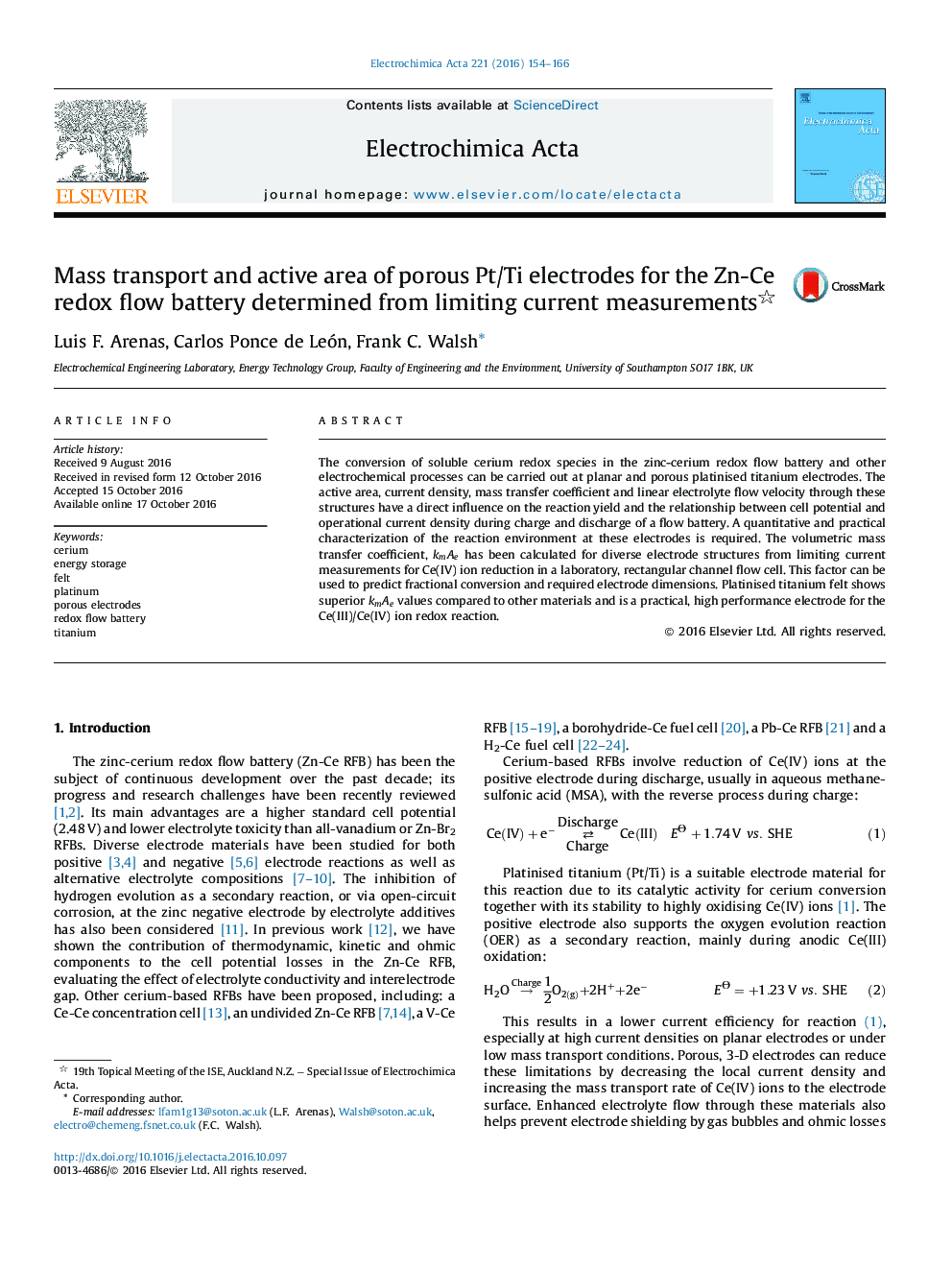| Article ID | Journal | Published Year | Pages | File Type |
|---|---|---|---|---|
| 6472767 | Electrochimica Acta | 2016 | 13 Pages |
â¢Evaluation of platinised titanium porous structures for the Ce(III)/Ce(IV) redox couple.â¢Ce(IV) ion reduction limiting currents are measured in a rectangular channel flow cell.â¢Mass transport and volumetric electrode area are quantified by the performance factor kmAe.â¢The cell potential using different electrode structures is rationalised in terms of kmAe.â¢Critical areas for further research are identified.
The conversion of soluble cerium redox species in the zinc-cerium redox flow battery and other electrochemical processes can be carried out at planar and porous platinised titanium electrodes. The active area, current density, mass transfer coefficient and linear electrolyte flow velocity through these structures have a direct influence on the reaction yield and the relationship between cell potential and operational current density during charge and discharge of a flow battery. A quantitative and practical characterization of the reaction environment at these electrodes is required. The volumetric mass transfer coefficient, kmAe has been calculated for diverse electrode structures from limiting current measurements for Ce(IV) ion reduction in a laboratory, rectangular channel flow cell. This factor can be used to predict fractional conversion and required electrode dimensions. Platinised titanium felt shows superior kmAe values compared to other materials and is a practical, high performance electrode for the Ce(III)/Ce(IV) ion redox reaction.
Graphical abstractDownload high-res image (196KB)Download full-size image
